This solution uses Python and assumes that there aren't so many rows that they cannot be read into memory. I do not warrant this code free from defects; use at your own risk. So I suggest you run this against a copy of your table or make a backup first.
This code uses the pymysql driver.
import pymysql
from datetime import date, timedelta
from itertools import groupby
import sys
conn = pymysql.connect(db='x', user='x', password='x', charset='utf8mb4', use_unicode=True)
cursor = conn.cursor()
# must be sorted by date:
cursor.execute('select items, trade_date from date_test1 order by trade_date, items')
rows = cursor.fetchall() # tuples: (datetime.date, str)
if len(rows) == 0:
sys.exit(0)
groups = []
for k, g in groupby(rows, key=lambda row: row[1]):
groups.append(list(g))
one_day = timedelta(days=1)
previous_group = groups.pop(0)
next_date = previous_group[0][1]
for group in groups:
next_date = next_date + one_day
while group[0][1] != next_date:
# missing date
for tuple in previous_group:
cursor.execute('insert into date_test1(items, trade_date) values(%s, %s)', (tuple[0], next_date))
print('inserting', tuple[0], next_date)
conn.commit()
next_date = next_date + one_day
previous_group = group
Prints:
inserting c 2020-03-23
inserting d 2020-03-23
inserting c 2020-03-24
inserting d 2020-03-24
Discussion
With your sample data, after the rows are fetched, rows is:
(('a', datetime.date(2020, 3, 20)), ('b', datetime.date(2020, 3, 20)), ('a', datetime.date(2020, 3, 21)), ('c', datetime.date(2020, 3, 22)), ('d', datetime.date(2020, 3, 22)), ('a', datetime.date(2020, 3, 25)), ('e', datetime.date(2020, 3, 26)))
After the following is run:
groups = []
for k, g in groupby(rows, key=lambda row: row[1]):
groups.append(list(g))
groups is:
[[('a', datetime.date(2020, 3, 20)), ('b', datetime.date(2020, 3, 20))], [('a', datetime.date(2020, 3, 21))], [('c', datetime.date(2020, 3, 22)), ('d', datetime.date(2020, 3, 22))], [('a', datetime.date(2020, 3, 25))], [('e', datetime.date(2020, 3, 26))]]
That is, all the tuples with the same date are grouped together in a list so it becomes to easier to detect missing dates.

